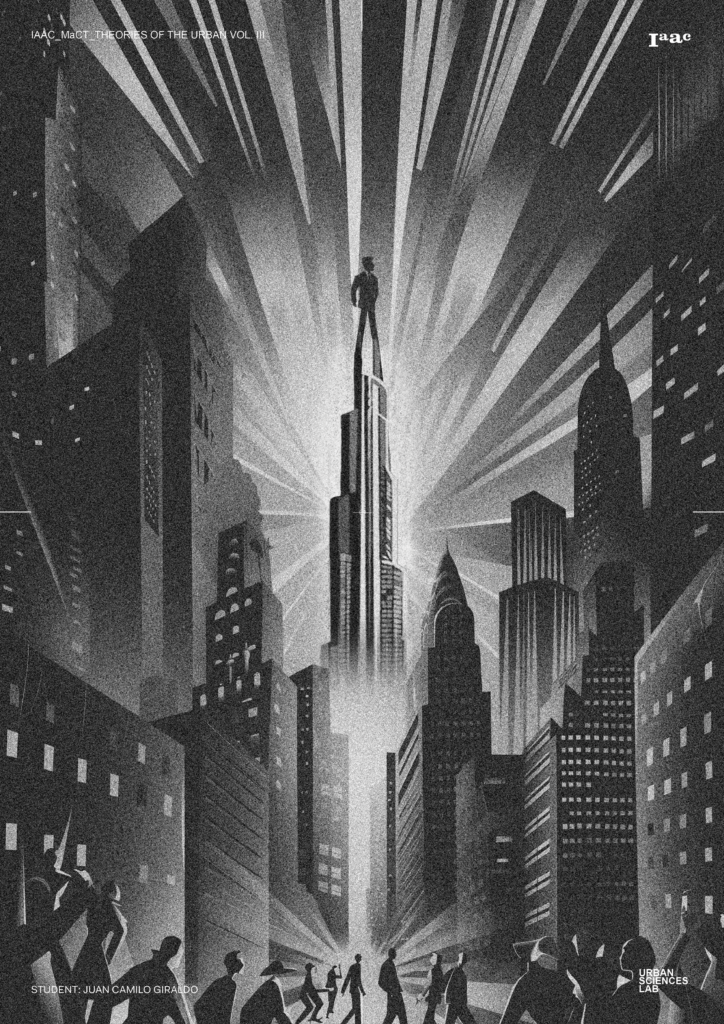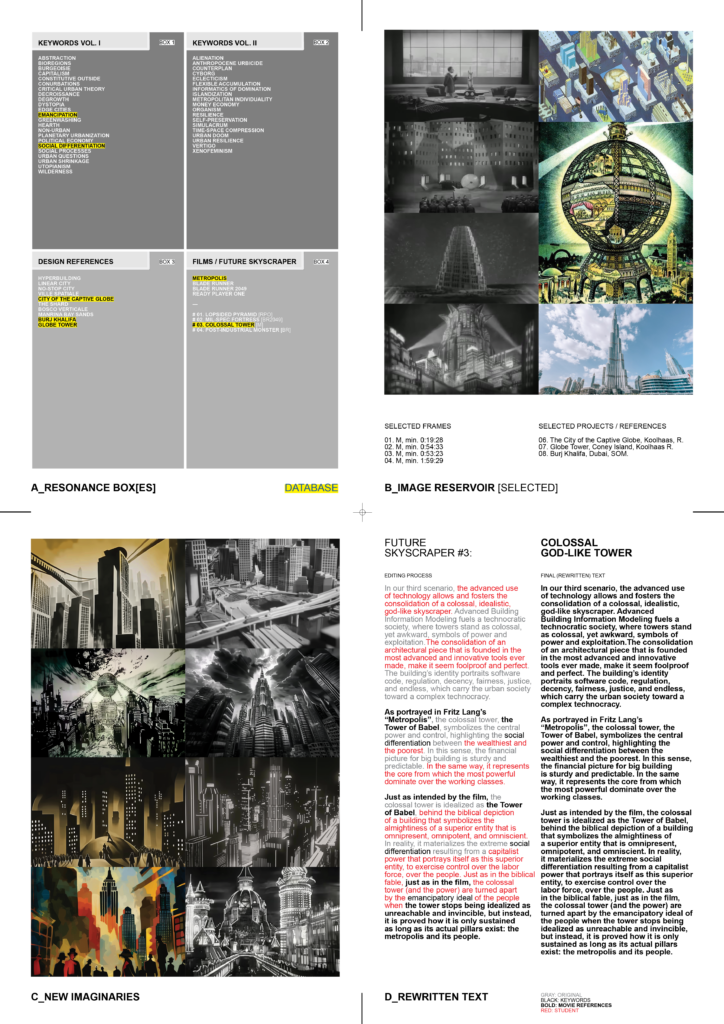Sterling, B (2015) imagined four fictious scenarios of how future skyscrapers might be, differentially equalizing the state of technology, and the economical-political climate:
- Future skyscraper #1: Huge, lopsided pyramid
- Future skyscraper #2: No-nonsense, mil-spec fortress
- Future skyscraper #3: Colossal, awkward tower
- Future skyscraper #4: Postindustrial, digitized monster
In our third scenario, the advanced use of technology allows and fosters the consolidation of a colossal, idealistic, god-like skyscraper. Advanced Building Information Modeling fuels a technocratic society, where towers stand as colossal, yet awkward, symbols of power and exploitation. The consolidation of an architectural piece that is founded in the most advanced and innovative tools ever made, make it seem foolproof and perfect. The building’s identity portraits software code, regulation, decency, fairness, justice, and endless, which carry the urban society toward a complex technocracy.
As portrayed in Fritz Lang’s “Metropolis”, the colossal tower, the Tower of Babel, symbolizes the central power and control, highlighting the social differentiation between the wealthiest and the poorest. In this sense, the financial picture for big building is sturdy and predictable. In the same way, it represents the core from which the most powerful dominate over the working classes.
Just as intended by the film, the colossal tower is idealized as the Tower of Babel, behind the biblical depiction of a building that symbolizes the almightiness of a superior entity that is omnipresent, omnipotent, and omniscient. In reality, it materializes the extreme social differentiation resulting from a capitalist power that portrays itself as this superior entity, to exercise control over the labor force, over the people. Just as in the biblical fable, just as in the film, the colossal tower (and the power) is turned apart by the emancipatory ideal of the people when the tower stops being idealized as unreachable and invincible, but instead, it is proved how it is only sustained as long as its actual pillars exist: the metropolis and its people.



